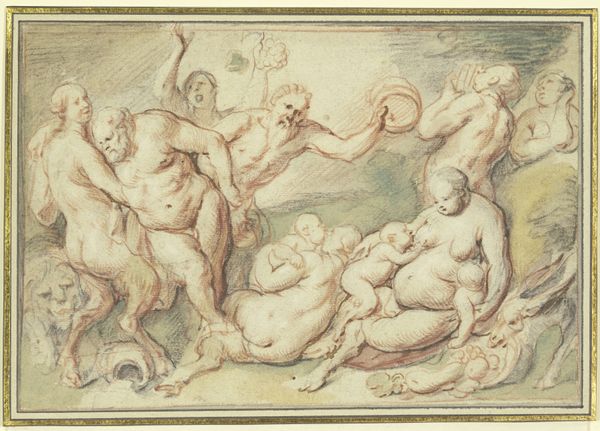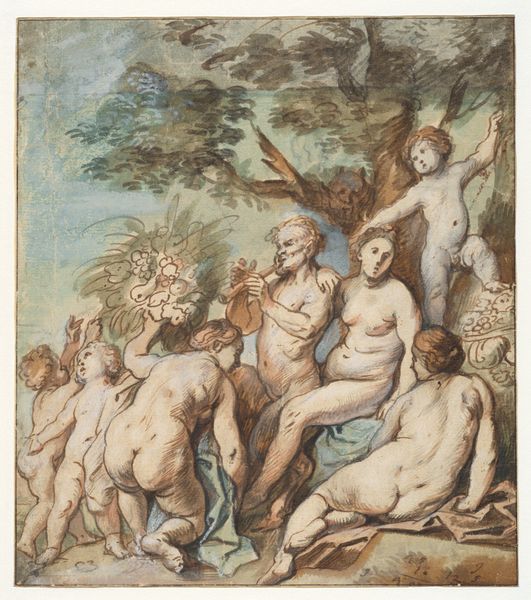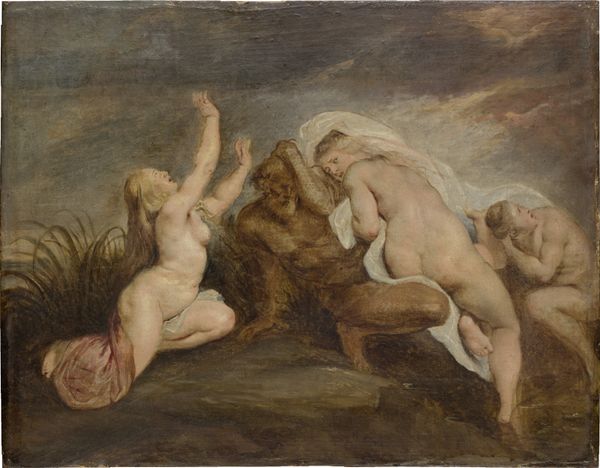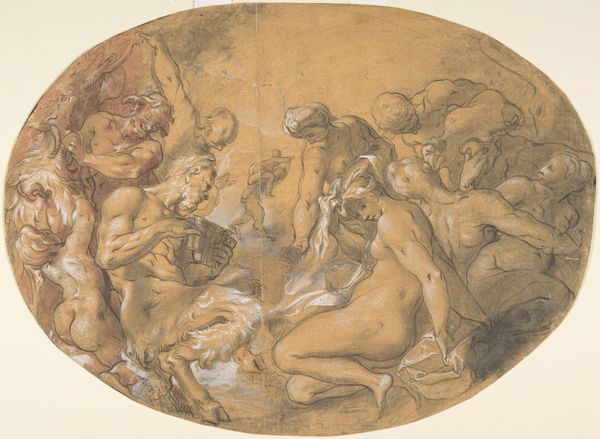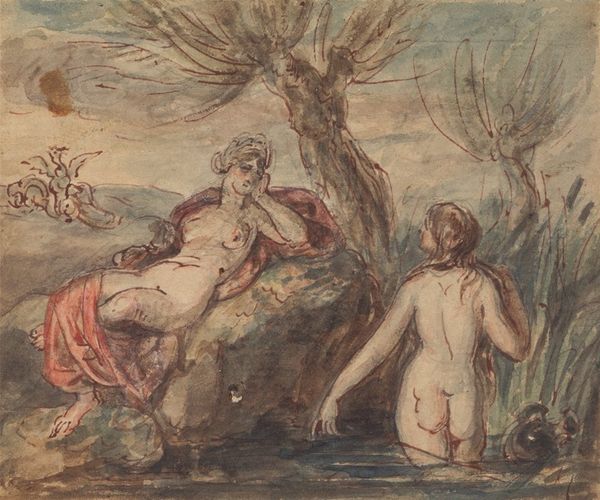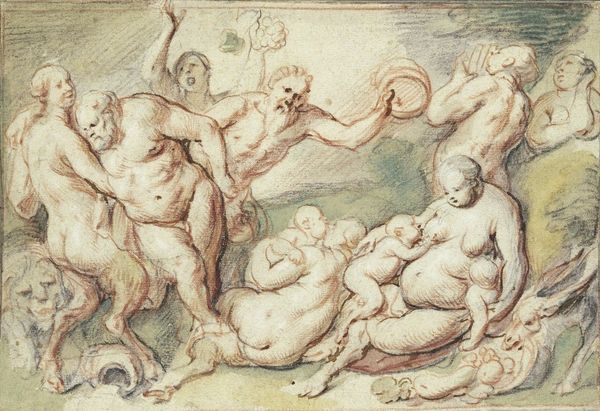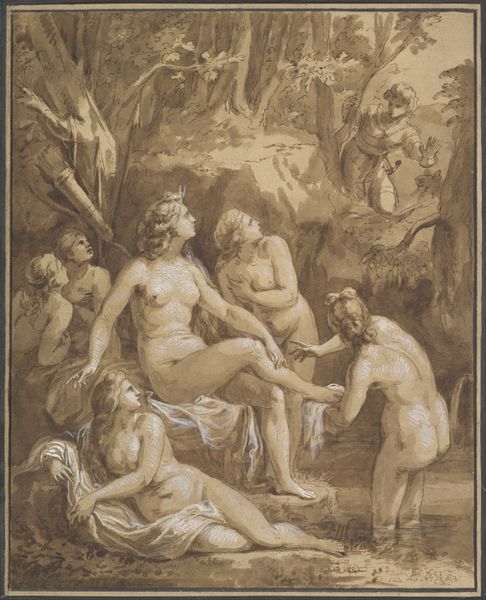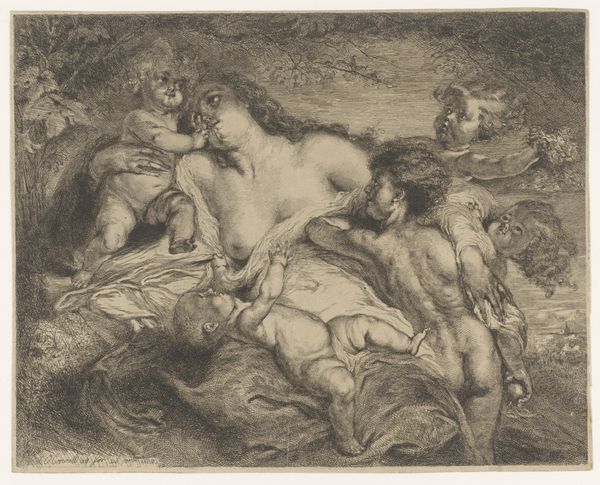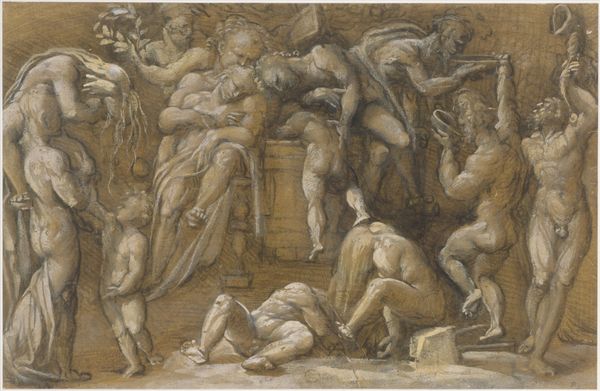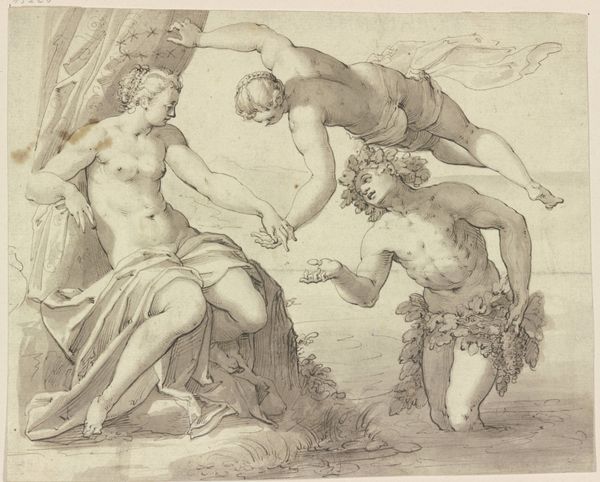
drawing, oil-paint
#
drawing
#
baroque
#
oil-paint
#
charcoal drawing
#
figuration
#
oil painting
#
female-nude
#
genre-painting
#
nude
#
watercolor
Dimensions: 7 15/16 x 10 11/16 in. (20.2 x 27.2 cm)
Copyright: Public Domain
Editor: Here we have "Nymphs Surprised," an oil painting by Jacob Jordaens, created between 1637 and 1643. The earthy tones give it a somewhat somber feeling despite the figures being nude. I am curious about the context. How do you interpret this work? Curator: Jordaens places us within a tradition deeply entangled with issues of power, visibility, and the male gaze. Consider the concept of the "female nude" within art history: it's rarely just about aesthetics. It’s historically functioned to construct and reinforce societal norms about women's bodies and their roles, primarily for a male audience. Editor: So, these aren't just innocent bathers. Curator: Exactly. Who are these nymphs and who is it that surprises them? Does their surprise indicate vulnerability, objectification? And whose perspective are we invited to share? Jordaens was a Baroque painter working in a patriarchal society. Consider, too, the symbolism often associated with nymphs – their connection to nature, fertility. Editor: I hadn’t thought of the gaze implicit in the title. The act of surprise feels inherently intrusive. Curator: Precisely. This brings us to contemporary considerations around consent, voyeurism, and the representation of women in art. Does this image celebrate female beauty, or does it perpetuate the idea of women as objects of male desire? Editor: It feels a bit like both. I’m grappling with how to reconcile the beauty of the figures with the potential objectification. Curator: And that tension, that discomfort, is where the work truly engages us. What power dynamics do you see being depicted? Editor: The contrast between the idealized forms and the raw physicality is striking. It’s forced me to think more deeply about the politics of representation. Curator: It prompts questions that challenge us to examine not just the painting itself, but the broader societal narratives it participates in, the relationship with the viewer, the artistic convention... a mirror to our own values.
Comments
No comments
Be the first to comment and join the conversation on the ultimate creative platform.
